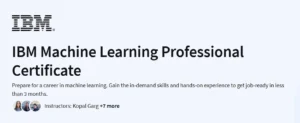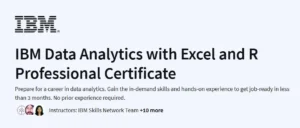What will you learn in Image and Video Processing: From Mars to Hollywood with a Stop at the Hospital Course
Understand how digital images are formed, represented, and manipulated
Apply core image processing techniques like filtering, enhancement, and transformations
Analyze and modify images using Python-based tools
Explore the basics of image segmentation and object recognition
Build foundational knowledge for computer vision and deep learning
Program Overview
Module 1: Introduction to Digital Images
⏳ 1 week
Topics: Pixels, grayscale vs. color images, image file formats
Hands-on: Viewing and manipulating raw image data
Module 2: Image Enhancement
⏳ 1 week
Topics: Histograms, contrast stretching, thresholding
Hands-on: Improving image visibility and brightness
Module 3: Filtering and Edge Detection
⏳ 1 week
Topics: Smoothing filters, sharpening filters, Sobel and Laplacian methods
Hands-on: Applying filters to detect features and reduce noise
Module 4: Geometric Transformations
⏳ 1 week
Topics: Scaling, rotation, translation, affine transformations
Hands-on: Changing image perspective and alignment
Module 5: Image Segmentation & Morphology
⏳ 1 week
Topics: Binary image processing, region labeling, morphology operations
Hands-on: Segmenting and labeling objects in images
Get certificate
Job Outlook
Growing demand in fields like AI, computer vision, robotics, medical imaging, and augmented reality
Entry-level roles in image processing or AI typically range from $60,000–$100,000/year
Strong base for advanced careers in machine learning and deep learning for vision
Freelance and research roles available in visual computing, surveillance, and automation
Specification: Image and Video Processing: From Mars to Hollywood with a Stop at the Hospital
|
FAQs
- Basic familiarity with Python helps but isn’t mandatory.
- The course uses beginner-friendly Python examples.
- Most coding is step-by-step with guidance.
- Prior exposure to NumPy or image libraries is a plus.
- Non-coders can still grasp concepts but may need extra practice.
- The course focuses on classical image processing, not deep learning.
- Covers enhancement, filtering, segmentation, and transformations.
- CNNs and advanced computer vision are beyond its scope.
- It provides a strong base for later deep learning courses.
- Great starting point before diving into AI-driven vision models.
- Techniques apply to medical imaging, robotics, and AR.
- Can enhance personal projects like photo editing or video filters.
- Useful in research involving visual data.
- Helps build a portfolio with hands-on Python projects.
- A stepping stone for applied computer vision jobs.
- Basic algebra and matrix operations are helpful.
- Some concepts use linear algebra and signal processing basics.
- Visual demonstrations simplify theory-heavy parts.
- Python libraries handle most of the complex calculations.
- It’s approachable even for those without strong math backgrounds.
- Shows hands-on exposure to image and video processing.
- Demonstrates initiative in AI and computer vision learning.
- Adds credibility for internships or junior analyst roles.
- Stronger when paired with projects in a portfolio.
- Employers value practical applications more than certificates alone.





